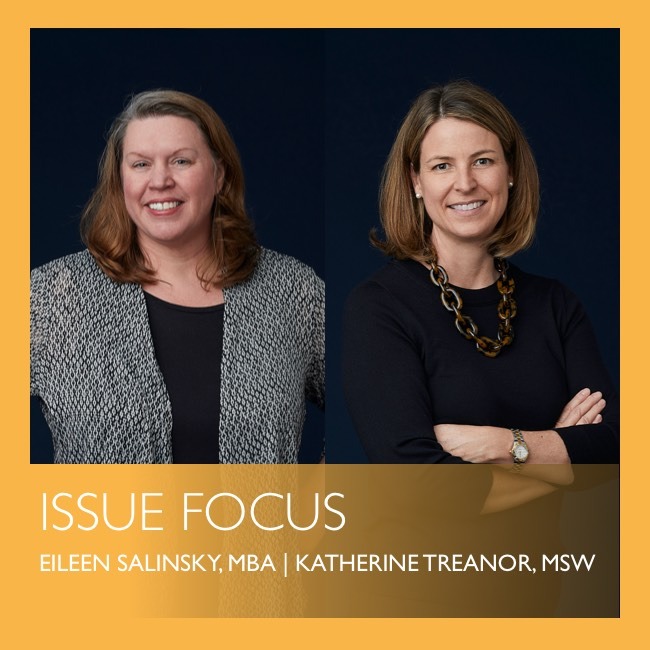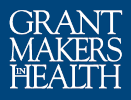April 2020

By Eileen Salinsky and Kate Treanor
As the novel coronavirus races across the globe, health funders are urgently preparing for and responding to COVID-19 in the communities they serve. While past public health crises inform COVID-19 response, there is no proven playbook for how health philanthropy should respond to this rapidly evolving threat. The health, social, and economic impacts of the pandemic promise to be profound, the public policy terrain is shifting and uncertain, and funders are quickly adjusting their own operations and decisionmaking processes in order to meet the needs of grantees and community-based partners. GIH is closely monitoring health philanthropy’s response to COVID-19 and sharing what funders are doing and learning as they seek to mitigate the wide-reaching effects of the crisis.
Flexibility for Existing Grantees
Health foundations recognize the need to reorder priorities and have moved swiftly to adapt internal policies and procedures to the new reality. In support of social distancing imperatives, health funders are leading by shutting down. They are arranging for foundation staff to work remotely; are cancelling foundation-sponsored events; and are supporting their grantees in cancelling, reimagining, or postponing convenings.
Many health funders are adopting grants management and funding policies designed to give grantees maximum flexibility to respond to the health needs and economic disruptions of COVID-19. As outlined in the Council on Foundations’ COVID-19 pledge, these policies include:
- eliminating or relaxing grant restrictions to allow grantees to repurpose funds, such as by converting existing program grants to general operating support, offering blanket approval of changes needed related to events and deliverables, and preemptively allowing budget reallocations and grant extension requests;
- automatically extending funding periods to provide an additional year of funding without requiring new proposals or applications;
- removing caps on indirect expenses;
- accelerating payment schedules;
- postponing or waiving reporting requirements, site visits, and other oversight mechanisms;
- extending application deadlines for existing funding opportunities; and
- streamlining application requirements for new funding requests.
Public Communications
Funders are also serving as trusted sources of information. Health foundations have built credibility in the communities they serve and recognize that people are likely to turn to them for objective, curated information. They are amplifying important public health messages and sharing information about available community resources. For example, the Missouri Foundation for Health is actively coordinating communications activities with state and local officials to develop consistent public messaging that will protect health and save lives, including specific activities geared toward educating foreign-born and disenfranchised populations. Health funders are using their voice to bring attention to critical aspects of the pandemic and to advocate for those most at risk. Their blog posts, articles, editorials, and live interviews reach a wide audience including policymakers, nonprofit and business leaders, and others in positions of power. To assist foundations as they develop messaging on COVID-19, The Communications Network is compiling resources and best practice examples of funder communications.
Rapid Response Grantmaking
Health foundations are ramping up their grantmaking to support COVID-19 response and recovery. Many health funders are contributing to or creating community-level rapid response funds to address immediate needs, such as the Alliance Healthcare Foundation, bi3, The California Endowment, Caring For Denver Foundation, Group Health Foundation, Harvard Pilgrim Health Care Foundation, Horizon Foundation, New York Community Trust, and Tufts Health Plan Foundation. These pooled rapid response funds are often managed by community foundations or United Way agencies. Others are being directly administered by health foundations, like the ones set up by Brandywine Health Foundation and Sierra Health Foundation. Priorities include shoring up the health care safety net; supporting community-based nonprofits; offering economic relief; and providing emergency assistance to low income families, high-risk individuals, communities of color, immigrants, the homeless, and other populations most vulnerable to the effects of COVID-19.
Some funders are also providing targeted support to pooled funds focused on specific emergency responses that align closely with broader philanthropic priorities. For example, the Robert Wood Johnson Foundation made early contributions to the CDC Foundation’s Emergency Response Fund. The fund, activated in January, provides immediate support for critical, on the ground public health needs. Other funders, such as the Colorado Health Foundation and Humana Foundation, have contributed to response funds focused on addressing food insecurity.
An additional tactic being employed by health foundations is quickly creating new grant opportunities for organizations on the front lines of the pandemic response. For example, Blue Cross Blue Shield of Louisiana Foundation made $2 million in grants available to support general operating costs at nonprofits throughout the state. The Mat-Su Health Foundation’s Coronavirus Prevention and Response awards include grants up to $50,000 designed to support local nonprofits facing unplanned expenses and lost revenue related to the pandemic. The California Wellness Foundation is giving grants to organizations providing essential services and advocacy efforts throughout the state, and it has awarded core support grants to smaller and mid-size grantees experiencing significant disruptions to their work. Medica Foundation is making up to $1 million in targeted, emergency funding available in key focus areas including child and family support, food security, and mental health services.
Longer Term Response and Recovery Strategies
Initial funding commitments are often framed as “first wave” grantmaking by health funders, intended to respond to immediate needs. The COVID-19 pandemic strikes at the heart of health funders’ philanthropic mission and will require short-, medium-, and long-term responses. As the world changes, health philanthropy must adapt and recalibrate. Health foundations are currently in the process of forecasting the intersectional impact of the pandemic and assessing the most effective ways to engage their own assets moving forward.
These decisions will require a period of uncomfortable introspection and difficult choices. While most health funders are likely to honor existing strategic priorities, they must decide how to advance these goals under radically different circumstances.
- Should philanthropic organizations increase their funding levels at a time when their investment portfolios have experienced significant downturns?
- What types of mission-related investments, such as no- or low-interest bridge loans, can be used to support the nonprofit sector?
- Should philanthropic organizations re-evaluate strategic partnerships to focus investments in mission-critical communities and organizations?
- What non-financial assets can they deploy to demonstrate leadership and forge unity?
- How can philanthropic organizations best center equity in their decisionmaking given that the most extreme consequences of the pandemic, in terms of both health outcomes and economic losses, will be experienced by those least able to absorb these impacts?
Grantmakers In Health is striving to facilitate connection and collaboration among health funders as they make these and other challenging decisions regarding the evolving roles and responsibilities of philanthropy during this crisis. We are all in this together.
Focus Areas:
Topics:
